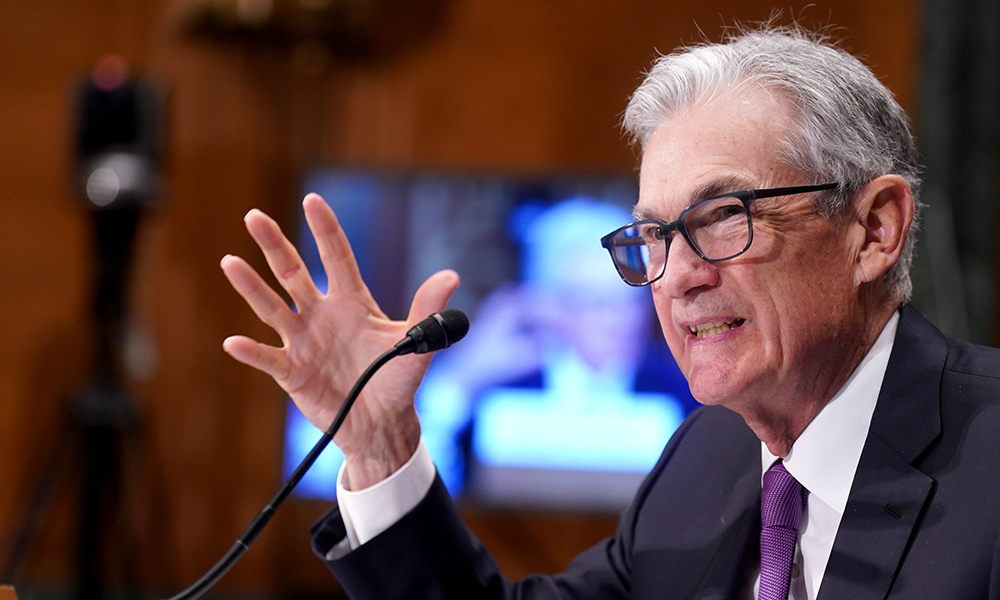
许多美国人对经济感到不满的一大主要原因是:物价太高了。
也许物价上涨的速度没有过去那么快了,但平均价格仍高于三年前的水平,令人痛苦,而且物价大多还在继续上涨。
以2升的瓶装汽水为例:2021年2月,在通货膨胀开始升温之前,全美超市的平均价格为1.67美元。三年后呢?这瓶汽水的售价为2.25美元,涨幅高达35%。
鸡蛋价格也是如此。鸡蛋价格在2022年飙升,随后回落,但仍比三年前高出43%。
同样,二手车的平均价格也是如此:从2021年2月的约2.3万美元飙升至2022年4月的3.1万美元。到上个月,平均价格降至26752美元,但仍比2021年2月高出16%。
如果物价确实下跌,也就是经济学家所说的通货紧缩,那岂不美哉?谁不想启动时光机,回到经济摆脱疫情时期的衰退、物价飙升之前的日子呢?
至少现在物价上涨得更慢了,这就是所谓的反通货膨胀。例如,美国政府公布的一项关键物价指标显示,2月份物价上涨0.3%,低于1月份0.4%的涨幅。与去年同期相比,物价上涨了2.5%,远低于2022年年中7.1%的峰值。
但这些渐进式的改善还不足以让公众满意,他们对物价的不满给总统乔·拜登的连任竞选带来了风险。
美联储理事会成员丽莎·库克去年表示:“大多数美国人并不只是在寻求实现反通货膨胀,而是通货紧缩。他们希望物价回到疫情前的水平。”
然而,许多经济学家警告说,消费者应该当心自己的愿望成真。整体经济的物价下跌实际上是亚健康信号。
英国央行警告称:“物价下跌带来的后果远比我们看到的要严重。”
物价下跌有什么弊端呢?
什么是通货紧缩?
通货紧缩是指总体物价普遍和持续下降。偶尔出现的消费者价格逐月下降不算在内。自20世纪30年代的大萧条以来,美国从未出现过真正的通货紧缩。
日本最近经历了一轮通货紧缩。从20世纪90年代初房地产和金融市场的崩溃开始,日本经历了数十年的物价下跌,现在才摆脱困境。
通货紧缩有什么问题?
西班牙央行(Banco de España)在其网站上表示:“尽管物价下跌似乎是件好事,但通货紧缩实际上可能对经济造成严重损害。”
为什么这么说呢?主要是因为物价下跌往往会抑制消费者消费。毕竟,如果你能以更低的价格买到想要的东西——汽车、家具、电器以及去度假,为什么现在购买呢?
现实情况是,经济的健康有赖于稳定的消费。在美国,家庭支出约占总体经济的70%。如果消费者为了等待更低的价格而集体减少消费,企业将面临更大的降价压力,以刺激销售。
与此同时,雇主可能被迫裁员或减薪,或者两者兼而有之。当然,失业者更不可能消费,所以物价很可能继续下跌。所有这些都有引发“螺旋式通货紧缩”的风险,即降价、裁员、进一步降价、进一步裁员,如此循环往复,而且随之而来的可能是另一场经济衰退。
正是为了防止这种经济恶性循环,日本央行才会在2016年实施负利率,美联储才会在2007—2009年大衰退期间和之后连续七年将美国利率维持在近零水平。
通货紧缩还会产生另一种痛苦的影响:通货紧缩使借款人的经通胀调整后的贷款成本更高,从而损害了借款人的利益。
通货紧缩有什么益处吗?
诚然,当物价下跌时,美国人可以让自己的薪水更耐花。如果食品或汽油价格暴跌,美国家庭肯定会发现,只要他们仍然有工作,购买食品或支付通勤费用的痛苦就会减轻。
一些经济学家甚至质疑通货紧缩会对经济造成严重威胁的观点。2015年,国际清算银行(Bank for International Settlements,全球央行论坛)的研究人员回顾了38个经济体140年来的通货紧缩事件,得出了这样的结论:物价下跌与经济增长之间的相关性“很弱,主要源于大萧条”。
但唯一的例外也较为独特:从1929年到1933年,美国经济产出骤降了三分之一,物价下跌了四分之一,失业率从3%飙升至令人崩溃的25%。
该银行的研究人员表示,最大的经济风险并非来自商品和服务价格的下跌,而是来自股票、债券和房地产等资产价格的自由落体。反过来,这些崩溃的资产又会拖垮那些持有摇摇欲坠的投资或向陷入困境的房地产开发商和购房者提供贷款的银行。
利益受损的银行可能会切断信贷,而这是整体经济的命脉。
可能带来的结果是什么呢?令人痛苦的经济衰退。(财富中文网)
美联社驻底特律汽车记者汤姆·克里舍(Tom Krisher)对此报道有贡献。
译者:中慧言-王芳
许多美国人对经济感到不满的一大主要原因是:物价太高了。
也许物价上涨的速度没有过去那么快了,但平均价格仍高于三年前的水平,令人痛苦,而且物价大多还在继续上涨。
以2升的瓶装汽水为例:2021年2月,在通货膨胀开始升温之前,全美超市的平均价格为1.67美元。三年后呢?这瓶汽水的售价为2.25美元,涨幅高达35%。
鸡蛋价格也是如此。鸡蛋价格在2022年飙升,随后回落,但仍比三年前高出43%。
同样,二手车的平均价格也是如此:从2021年2月的约2.3万美元飙升至2022年4月的3.1万美元。到上个月,平均价格降至26752美元,但仍比2021年2月高出16%。
如果物价确实下跌,也就是经济学家所说的通货紧缩,那岂不美哉?谁不想启动时光机,回到经济摆脱疫情时期的衰退、物价飙升之前的日子呢?
至少现在物价上涨得更慢了,这就是所谓的反通货膨胀。例如,美国政府公布的一项关键物价指标显示,2月份物价上涨0.3%,低于1月份0.4%的涨幅。与去年同期相比,物价上涨了2.5%,远低于2022年年中7.1%的峰值。
但这些渐进式的改善还不足以让公众满意,他们对物价的不满给总统乔·拜登的连任竞选带来了风险。
美联储理事会成员丽莎·库克去年表示:“大多数美国人并不只是在寻求实现反通货膨胀,而是通货紧缩。他们希望物价回到疫情前的水平。”
然而,许多经济学家警告说,消费者应该当心自己的愿望成真。整体经济的物价下跌实际上是亚健康信号。
英国央行警告称:“物价下跌带来的后果远比我们看到的要严重。”
物价下跌有什么弊端呢?
什么是通货紧缩?
通货紧缩是指总体物价普遍和持续下降。偶尔出现的消费者价格逐月下降不算在内。自20世纪30年代的大萧条以来,美国从未出现过真正的通货紧缩。
日本最近经历了一轮通货紧缩。从20世纪90年代初房地产和金融市场的崩溃开始,日本经历了数十年的物价下跌,现在才摆脱困境。
通货紧缩有什么问题?
西班牙央行(Banco de España)在其网站上表示:“尽管物价下跌似乎是件好事,但通货紧缩实际上可能对经济造成严重损害。”
为什么这么说呢?主要是因为物价下跌往往会抑制消费者消费。毕竟,如果你能以更低的价格买到想要的东西——汽车、家具、电器以及去度假,为什么现在购买呢?
现实情况是,经济的健康有赖于稳定的消费。在美国,家庭支出约占总体经济的70%。如果消费者为了等待更低的价格而集体减少消费,企业将面临更大的降价压力,以刺激销售。
与此同时,雇主可能被迫裁员或减薪,或者两者兼而有之。当然,失业者更不可能消费,所以物价很可能继续下跌。所有这些都有引发“螺旋式通货紧缩”的风险,即降价、裁员、进一步降价、进一步裁员,如此循环往复,而且随之而来的可能是另一场经济衰退。
正是为了防止这种经济恶性循环,日本央行才会在2016年实施负利率,美联储才会在2007—2009年大衰退期间和之后连续七年将美国利率维持在近零水平。
通货紧缩还会产生另一种痛苦的影响:通货紧缩使借款人的经通胀调整后的贷款成本更高,从而损害了借款人的利益。
通货紧缩有什么益处吗?
诚然,当物价下跌时,美国人可以让自己的薪水更耐花。如果食品或汽油价格暴跌,美国家庭肯定会发现,只要他们仍然有工作,购买食品或支付通勤费用的痛苦就会减轻。
一些经济学家甚至质疑通货紧缩会对经济造成严重威胁的观点。2015年,国际清算银行(Bank for International Settlements,全球央行论坛)的研究人员回顾了38个经济体140年来的通货紧缩事件,得出了这样的结论:物价下跌与经济增长之间的相关性“很弱,主要源于大萧条”。
但唯一的例外也较为独特:从1929年到1933年,美国经济产出骤降了三分之一,物价下跌了四分之一,失业率从3%飙升至令人崩溃的25%。
该银行的研究人员表示,最大的经济风险并非来自商品和服务价格的下跌,而是来自股票、债券和房地产等资产价格的自由落体。反过来,这些崩溃的资产又会拖垮那些持有摇摇欲坠的投资或向陷入困境的房地产开发商和购房者提供贷款的银行。
利益受损的银行可能会切断信贷,而这是整体经济的命脉。
可能带来的结果是什么呢?令人痛苦的经济衰退。(财富中文网)
美联社驻底特律汽车记者汤姆·克里舍(Tom Krisher)对此报道有贡献。
译者:中慧言-王芳
Many Americans are in a sour mood about the economy for one main reason: Prices feel too high.
Maybe they’re not rising as fast as they had been, but average prices are still painfully above where they were three years ago. And they’re mostly heading higher still.
Consider a 2-liter bottle of soda: In February 2021, before inflation began heating up, it cost an average of $1.67 in supermarkets across America. Three years later? That bottle is going for $2.25 — a 35% increase.
Or egg prices. They soared in 2022, then fell back down. Yet they’re still 43% higher than they were three years ago.
Likewise, the average used-car price: It rocketed from roughly $23,000 in February 2021 to $31,000 in April 2022. By last month, the average was down to $26,752. But that’s still up 16% from February 2021.
Wouldn’t it be great if prices actually fell — what economists call deflation? Who wouldn’t want to fire up a time machine and return to the days before the economy rocketed out of the pandemic recession and sent prices soaring?
At least prices are now rising more slowly — what’s called disinflation. On Friday, for example, the government said a key price gauge rose 0.3% in February, down from a 0.4% gain in January. And compared with a year earlier, prices were up 2.5%, way down from a peak of 7.1% in mid-2022.
But those incremental improvements are hardly enough to please the public, whose discontent over prices poses a risk to President Joe Biden’s re-election bid.
“Most Americans are not just looking for disinflation,’’ Lisa Cook, a member of the Federal Reserve’s Board of Governors, said last year. “They’re looking for deflation. They want these prices to be back where they were before the pandemic.’’
Many economists caution, though, that consumers should be careful what they wish for. Falling prices across the economy would actually be an unhealthy sign.
“There are,’’ the Bank of England warns, “more consequences from falling prices than meets the eye.’’
What could be so bad about lower prices?
WHAT IS DEFLATION?
Deflation is a widespread and sustained drop in prices across the economy. Occasional month-to-month drops in consumer prices don’t count. The United States hasn’t seen genuine deflation since the Great Depression of the 1930s.
Japan has experienced a much more recent bout of deflation. It is only now emerging from decades of falling prices that began with the collapse of its property and financial markets in the early 1990s.
WHAT’S WRONG WITH DEFLATION?
“Although lower prices may seem like a good thing,’’ Banco de España, the Spanish central bank, says on its website, “deflation can in fact be highly damaging to the economy.’’
How so? Mainly because falling prices tend to discourage consumers from spending. Why buy now, after all, if you can purchase what you want — cars, furniture, appliances, vacations — at a lower price later?
The reality is that the economy’s health depends on steady consumer purchases. In the United States, household spending accounts for around 70% of the entire economy. If consumers were to pull back, en masse, to await lower prices, businesses would face intense pressure to cut prices even more to try to jump-start sales.
In the meantime, employers might have to lay off waves of employees or cut pay — or both. Unemployed people, of course, are even less likely to spend, so prices would likely keep falling. All of which risks triggering a “deflationary spiral’’ of price cuts, layoffs, more price cuts, more layoffs. And on and on. Another recession could follow.
It was to prevent that very kind of economic nastiness that explains why the Bank of Japan resorted to negative interest rates in 2016 and why the Fed kept U.S. rates near zero for seven straight years during and after the Great Recession of 2007-2009.
Deflation exerts another painful effect, too: It hurts borrowers by making their inflation-adjusted loans more expensive.
ARE THERE ANY BENEFITS OF DEFLATION?
It’s certainly true that Americans can make their paychecks go further when prices are falling. If food or gasoline prices were to tumble, households would surely find it less painful to afford groceries or their commutes to work — as long as they remained employed.
Some economists even question the notion that deflation poses a serious economic threat. In 2015, researchers at the Bank for International Settlements, a forum for the world’s central banks, reviewed 140 years of deflationary episodes in 38 economies and reached this conclusion: The correlation between falling prices and economic growth “is weak and derives mostly from the Great Depression.’’
But the exception was a doozy: From 1929-1933, U.S. economic output plummeted by a third, prices sank by a quarter and the unemployment rate shot up from 3% to a crushing 25%.
The bank’s researchers said the biggest economic risk came not from falling prices for goods and services but rather from a freefall in the price of assets — stocks, bonds and real estate. Those collapsing assets, in turn, can topple banks that hold crumbling investments or that made loans to struggling real estate developers and homebuyers.
The damaged banks may then cut off credit — the lifeblood of the broader economy.
The likely result? A painful recession.
AP Auto Writer Tom Krisher in Detroit contributed to this report.






